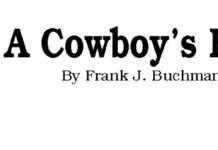Stamm reviews how to identify whether crop has been affected
MANHATTAN, Kan. – Kansas State University canola breeder Mike Stamm said breeding has aided improvements in canola’s ability to survive the winter.
Talking about increasing winter survivability for canola, Stamm said the growing point should be close to the soil surface because that is where it is the most protected.
This year’s canola had a tough beginning because the planting zone moisture had dried out in many places last fall, causing producers to seed their fields and then hope for rain.
Stamm said that’s not recommended because the initial, top growth is important for getting through the winter.
Fortunately, he said, most producers experienced good levels of moisture and above average temperatures last October, allowing for the canola to catch up.
“For the most part the canola I saw across (Kansas) was in excellent shape going into the winter months,” Stamm said, noting that winter survivability “is a balance of genetics to increase the chances of survival and planting on time to avoid excessive fall growth.”
According to Stamm, the plants had achieved optimum growth last fall, though he warns that too much top growth can result in concerns. For example, in Manhattan, the canola was too big.
If winterkill is a concern, there are a few ways to examine the canola crop to see if its defenses against the cold are effective.
Stamm said canola with low crowns that is prostrate to the soil surface is a good sign. Another indicator of healthy canola is if the crown is green and firm when squeezed because the plant has not winterkilled.
“If you’re starting to see some whitening of the stem tissue or the crown, or the stem is really squishy when you squeeze it, then you could potentially have some winterkill further down the line,” Stamm said.
He said the canola field can withstand going through some self-thinning and winterkill if it is scattered throughout the field because other plants will branch out to compensate.
For more information, producers can contact their local extension office. K-State’s Department of Agronomy also publishes a weekly eUpdate covering timely topics for the state’s growers.
-30-
FOR PRINT PUBLICATIONS: Links used in this story
K-State Research and Extension statewide offices, https://www.ksre.k-state.edu/about/statewide-locations.html
Department of Agronomy eUpdate, https://eupdate.agronomy.ksu.edu
K-State Research and Extension is a short name for the Kansas State University Agricultural Experiment Station and Cooperative Extension Service, a program designed to generate and distribute useful knowledge for the well-being of Kansans. Supported by county, state, federal and private funds, the program has county extension offices, experiment fields, area extension offices and regional research centers statewide. Its headquarters is on the K-State campus in Manhattan. For more information, visit www.ksre.ksu.edu. K-State Research and Extension is an equal opportunity provider and employer.
Story by:
Shelby Varner
srvarner@ksu.edu
More information:
Mike Stamm
785-532-3871
mjstamm@ksu.edu




